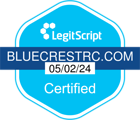Tai Chi, often considered a meditative movement practice, offers profound benefits in recovery by bridging the gap between mind and body. Its emphasis on slow, intentional movements improves physical strength and flexibility and promotes emotional resilience and mental clarity. Individuals engage in this practice and discover a unique pathway to stress reduction and mindfulness. Nevertheless, the question remains: how can integrating Tai Chi into recovery programs transform the healing journey for individuals facing physical and emotional challenges?
Understanding Tai Chi
Tai Chi is often practiced regularly as a holistic exercise that intertwines physical movement, breath control, and mental focus. Rooted in ancient Chinese traditions, its history spans centuries, evolving from martial arts to a widely recognized exercise that promotes health and well-being.
The tai chi philosophy emphasizes balance, harmony, and the flow of energy, known as “qi,” which is believed to be essential for maintaining physical and mental health.
The practice involves a series of slow, deliberate movements that nurture strength, flexibility, and relaxation. Each posture is designed to be fluid, promoting a sense of tranquility and mindfulness. This unique combination of physical and mental disciplines allows practitioners to enhance their body and environment awareness, thereby improving their overall quality of life.
Understanding tai chi requires an appreciation of its historical context and philosophical underpinnings. As a form of moving meditation, tai chi encourages individuals to connect with their inner selves, fostering resilience and emotional stability.
In this way, it serves as a powerful tool for recovery, aiding both physical rehabilitation and psychological healing. Its profound principles continue to resonate with individuals seeking a balanced approach to health.
The Mind-Body Connection
The intricate relationship between mind and body is crucial to well-being, particularly in practices like tai chi. This ancient movement therapy cultivates a deep sense of body awareness, allowing practitioners to develop mindfulness practices that improve their overall health.
As individuals engage in the flowing movements of tai chi, they develop heightened mental focus and emotional regulation, which are critical for effective stress management.
Intentional breathing is a central element of tai chi. Synchronizing breath with movement promotes relaxation and mental clarity. This synergy not only aids in physical recovery but likewise offers significant cognitive benefits, such as improved memory and concentration.
By incorporating tai chi into their self-care strategies, individuals can experience holistic healing that addresses physical and mental health.
Furthermore, the rhythm of tai chi encourages participants to remain present, facilitating a greater connection between mind and body. This practice nurtures resilience and empowers individuals to navigate life’s challenges with grace and composure.
Essentially, tai chi is a powerful tool for improving the mind-body connection, ultimately leading to a more balanced and fulfilling life.
Benefits for Mental Health
Engaging in tai chi offers profound benefits for mental health, nurturing emotional stability and resilience. This ancient practice is an effective mindfulness, improving cognitive benefits while encouraging self-awareness.
Integrating gentle movements with focused breathing, tai chi promotes emotional balance, making it an invaluable tool for stress management and anxiety relief.
The key benefits of tai chi for mental health include:
1. Resilience Training: Regular practice cultivates a mindset capable of maneuvering life’s challenges, improving overall mental fortitude.
2. Focus Improvement: The concentration required in tai chi enhances attention span and mental clarity, which can combat overwhelming and distracting feelings.
3. Stress Management: The rhythmic movements and deep breathing techniques activate the relaxation response, reducing cortisol levels and alleviating stress.
Through these practices, individuals experience significant improvements in emotional regulation, encouraging a sense of calm and well-being.
Tai chi not only serves as a physical exercise but likewise as a comprehensive approach to mental health, promoting a harmonious connection between mind and body that nourishes resilience and improves the quality of life.
Physical Health Improvements
Incorporating tai chi into a recovery regimen can lead to notable physical health improvements, improving overall well-being. This ancient martial art is particularly effective as a form of flexibility training, promoting increased range of motion in the joints and contributing to improved joint health.
The slow, controlled movements of tai chi not only aid in muscle relaxation but aid in strength building, allowing individuals to develop core stability and boost endurance.
Furthermore, tai chi emphasizes posture improvement, which can lead to better alignment and reduced strain on the body. As participants engage in mobility exercises, they experience improved coordination and balance, essential for injury prevention, especially during rehabilitation.
The low-impact nature of tai chi provides cardiovascular benefits, supporting heart health while minimizing stress on the joints.
Stress Reduction Techniques
Tai Chi offers a unique approach to stress reduction through its emphasis on mindfulness in movement, allowing practitioners to cultivate awareness and presence.
The integration of intentional breathing and relaxation techniques further improves this experience, promoting a sense of calm and well-being.
Furthermore, engaging in Tai Chi has been shown to lower cortisol levels, providing a physiological basis for its effectiveness in managing stress.
Mindfulness in Movement
Within the domain of stress reduction techniques, mindfulness in movement emerges as a powerful practice that nurtures a deep connection between body and mind. This approach, often seen in Tai Chi, encourages participants to engage in intentional movement as they cultivate a heightened awareness of the present moment.
By synchronizing mindful breathing with rhythmic motions, individuals can experience profound relaxation and clarity.
Consider the following elements that embody mindfulness in movement:
1. Fluidity of Motion: Each movement flows seamlessly into the next, creating a sense of harmony that eases tension and promotes relaxation.
2. Focused Awareness: Participants concentrate on the sensations within their bodies, allowing them to identify areas of stress and release them through intentional movement.
3. Breath Synchronization: The practice emphasizes slow, deliberate breathing, which improves the overall experience and deepens the connection between mind and body.
Through these elements, mindfulness in movement not only aids in stress reduction but also cultivates a sense of empowerment and well-being.
Breathing and Relaxation
Breathing techniques serve as fundamental tools in the repertoire of stress reduction strategies, offering individuals a pathway to relaxation and emotional balance.
In the practice of Tai Chi, breath awareness is intricately linked with movement, creating a harmonious flow that improves the overall experience of relaxation. By consciously engaging with the breath, practitioners can cultivate a deeper sense of presence, allowing the mind to settle and the body to unwind.
Relaxation techniques, such as deep diaphragmatic breathing, are vital to reducing feelings of anxiety and tension. As individuals focus on their breath, they activate the body’s natural relaxation response, which counteracts the physiological effects of stress.
This mindful approach promotes a connection between mind and body, encouraging a state of calm that can be particularly beneficial during recovery.
Incorporating breath awareness into daily routines improves the benefits of Tai Chi, allowing practitioners to harness the power of breath to navigate life’s challenges with greater ease.
Ultimately, these techniques not only contribute to physical well-being but also play an important role in emotional resilience, empowering individuals to cultivate lasting peace and balance in their lives.
Reducing Cortisol Levels
Effective stress reduction techniques are essential for managing cortisol levels, a hormone closely linked to the body’s stress response. Elevated cortisol can lead to various health issues, including anxiety, weight gain, and hormonal imbalance.
Tai Chi, with its mindful movements and focus on breath, provides an effective approach for cortisol reduction and supporting overall well-being.
Engaging in Tai Chi can improve hormonal balance through:
1. Mindful Movement: The slow, deliberate gestures of Tai Chi encourage a state of calm, reducing the fight-or-flight response that spikes cortisol levels.
2. Deep Breathing: Incorporating deep, rhythmic breathing promotes relaxation, signaling the body to lower stress hormones and restore equilibrium.
3. Meditative Focus: Concentrating on the present moment cultivates mental clarity, redirecting attention away from stressors and further contributing to hormonal stability.
Enhancing Emotional Resilience
A growing body of research highlights the profound impact of Tai Chi on improving emotional resilience among individuals in recovery. This ancient practice promotes emotional regulation through its mindful movements and breathing techniques, which can help individuals manage stress and anxiety effectively.
By encouraging a state of relaxation and focus, Tai Chi enables practitioners to cultivate a greater awareness of their emotional responses, thereby facilitating resilience building.
As participants engage in the slow, deliberate motions of Tai Chi, they learn to connect their physical sensations with their emotional states. This connection allows individuals to identify triggers and develop strategies for coping with adverse emotions, ultimately leading to improved emotional stability.
In addition, the meditative aspect of Tai Chi encourages a sense of inner peace, which can be particularly beneficial during challenging recovery journeys.
Incorporating Tai Chi into recovery programs not only offers physical benefits but also significantly improves emotional resilience. By providing a structured approach to emotional regulation, Tai Chi empowers individuals to navigate the complexities of their feelings, enabling them to face life’s challenges with greater confidence and adaptability.
Consequently, Tai Chi serves as a valuable tool in promoting long-lasting emotional well-being.
Integrating Tai Chi Into Recovery
Integrating Tai Chi into recovery programs offers a holistic approach to healing by enhancing physical balance and promoting mental clarity.
Practitioners often find that the gentle movements of Tai Chi not only improve coordination but likewise nurture a sense of calmness and focus.
This dual benefit supports individuals in steering their recovery journey with greater resilience and mindfulness.
Enhancing Physical Balance
Tai Chi stands out as a powerful tool for enhancing physical balance, particularly for individuals in recovery. This ancient practice combines mindful movement with intentional breathing, nurturing a deep connection between mind and body.
By engaging in balance exercises, participants not only improve their physical stability but likewise cultivate balance awareness. This heightened perception can significantly aid in the recovery process.
Benefits of incorporating Tai Chi into recovery include:
1. Improved Stability: Gentle movements promote core strength and coordination, reducing the risk of falls.
2. Increased Flexibility: Tai Chi’s fluidity helps to loosen tight muscles and joints, facilitating a greater range of motion.
3. Enhanced Posture: Regular practice encourages proper alignment, improving posture and overall body mechanics.
These elements collectively contribute to a more resilient body, crucial for those maneuvering the challenges of recovery.
Promoting Mental Clarity
Mind-body practices such as Tai Chi not only improve physical balance but similarly play a significant role in promoting mental clarity during recovery. By integrating Tai Chi into recovery routines, individuals can augment their mental focus and nurture cognitive clarity.
The slow, deliberate movements of Tai Chi facilitate mindfulness techniques that anchor the practitioner in the present moment, encouraging an environment conducive to mental agility. Focused breathing is a fundamental component of Tai Chi that aids in achieving a calm state of mind.
This practice encourages clarity exercises that sharpen concentration practices, which are essential for cognitive recovery. As participants engage in the rhythmic flow of movements, they simultaneously engage their minds, creating a harmonious balance between body and spirit.
In addition, the repetitive nature of Tai Chi serves to reinforce neural pathways, enabling improved mental resilience. This can be particularly beneficial for those overcoming challenges related to memory and attention.
Ultimately, the incorporation of Tai Chi into recovery not only improves physical well-being but also nurtures a sharper, more focused mind, empowering individuals to navigate their recovery journey with greater clarity and purpose.
Practicing Mindfulness Through Movement
The practice of mindfulness through movement offers a unique pathway to recovery, emphasizing the connection between physical activity and mental well-being. Tai Chi, in particular, exemplifies this integration, creating an environment where individuals can develop both body and mind.
By engaging in mindful shifts and flowing awareness, participants can experience a profound alteration in their overall state of being.
1. Breath Synchronization: Each movement aligns with breath, creating a rhythmic harmony that calms the mind and centers the spirit.
2. Focused Intent: Practitioners learn to channel their thoughts into each deliberate action, enhancing concentration and reducing anxiety.
3. Sensory Engagement: The gentle movements invite awareness of the body, promoting a deeper connection with physical sensations and emotional responses.
Through these elements, Tai Chi becomes a powerful tool for cultivating mindfulness.
The practice encourages individuals to embrace the present moment, allowing them to navigate the complexities of recovery with grace and resilience.
As participants immerse themselves in this mindful practice, they not only strengthen their physical bodies but likewise nurture their mental health, paving the way for a holistic approach to healing.
Case Studies and Testimonials
Case studies and testimonials provide compelling evidence of Tai Chi’s transformative impact on individuals in recovery.
Personal narratives highlight significant health improvements, showcasing how the practice nurtures resilience and emotional well-being.
These stories underscore the profound connection between movement and healing, offering inspiration for those seeking alternative paths to recovery.
Personal Transformation Stories
Transformative journeys through Tai Chi often reveal profound personal growth and resilience, as individuals uncover new dimensions of their physical and mental well-being.
The practice not only cultivates mindfulness but additionally nurtures a strong sense of community and support. Many participants share inspiring personal experiences that illustrate the life-changing effects of Tai Chi.
1. From Anxiety to Calm: A former corporate professional described how Tai Chi helped him shift from a high-stress lifestyle to a state of tranquility, significantly reducing his anxiety levels.
2. Regaining Mobility: An elderly woman who was initially hesitant because of chronic pain found joy in movement again as she gradually regained her mobility and confidence through gentle Tai Chi exercises.
3. Building Connections: A young man recovering from addiction spoke about the camaraderie he discovered in group classes, which played an essential role in his recovery journey and emotional healing.
These compelling stories highlight the diverse ways Tai Chi can transform lives, illustrating that it is more than just a physical practice; it serves as a pathway to deeper personal insights and lasting change.
Health Improvement Outcomes
Numerous studies and testimonials underscore the remarkable health improvement outcomes associated with Tai Chi practice. This ancient martial art, recognized for its gentle movements, serves as an effective rehabilitation technique for various conditions, promoting both physical and emotional healing. Participants often report improved balance, flexibility, and strength, which contribute significantly to injury prevention.
Research highlights how Tai Chi integrates holistic practices, allowing individuals to cultivate mindfulness and body awareness, critical components of recovery. Many case studies reveal that those engaged in supportive environments—such as community centers or group classes—experience greater motivation and adherence to their rehabilitation goals.
Furthermore, the adaptive strategies employed in Tai Chi guarantee that the practice is accessible to individuals with diverse abilities, reinforcing personalized approaches to health improvement. Testimonials illustrate that practitioners not only benefit physically but likewise experience a profound sense of emotional healing, improving overall well-being.
In essence, Tai Chi nurtures community engagement during addressing the multifaceted needs of individuals on their recovery journeys, proving to be a valuable tool in contemporary rehabilitation practices.
Getting Started With Tai Chi
Starting on the journey of Tai Chi can be both rewarding and accessible, offering individuals a gentle introduction to the art of mindful movement. This ancient practice not only promotes physical well-being but also improves mental clarity, making it an ideal choice for those in recovery.
To begin this journey, consider the following steps:
1. Explore Tai Chi Styles: Familiarize yourself with tai chi styles, such as Yang, Chen, and Wu. Each style has its unique characteristics and benefits, allowing you to choose one that resonates with your personal preferences.
2. Enroll in Beginner Classes: Seek out beginner classes in your area or online. These classes are designed to teach foundational movements and principles in a supportive environment, ensuring you build a strong base.
3. Practice Mindfulness: Incorporate mindfulness into your practice. Focus on your breath and the sensations in your body as you move, nurturing a deeper connection between mind and body.
Frequently Asked Questions
Can Individuals Practice Tai Chi With Physical Limitations?
Yes, tai chi can be practiced by individuals with physical limitations through adaptive techniques that accommodate their unique needs. The gentle movements promote flexibility, balance, and relaxation, making it an accessible form of exercise for diverse populations.
How Often Should I Practice Tai Chi for Optimal Benefits?
Practice Tai Chi consistently for ideal benefits, aiming for at least three to five weekly sessions. Frequency recommendations may vary based on individual needs, but regular engagement significantly improves physical and mental well-being.
Are There Specific Tai Chi Styles for Recovery Purposes?
Certain tai chi styles, such as Yang and Sun, are particularly beneficial for recovery. These styles emphasize gentle movements and mindfulness, serving as effective recovery techniques for enhancing physical rehabilitation and overall well-being.
Can Tai Chi Help With Chronic Pain Management?
Tai Chi can effectively manage chronic pain by integrating mindfulness techniques that promote relaxation and awareness, ultimately enhancing pain relief. This holistic approach nurtures a deeper connection between body and mind, facilitating overall well-being.
Is There an Age Limit for Starting Tai Chi?
There is no strict age limit for starting Tai Chi, as individuals of all ages can experience its benefits. Beginners are encouraged to adapt practices to their physical capabilities, nurturing a supportive environment for growth.
Final Thoughts
Tai Chi is a holistic practice that integrates mind and body, making it particularly beneficial during recovery. This practice enhances physical strength and flexibility while fostering emotional resilience and mental clarity. Tai Chi is a valuable tool for individuals navigating recovery challenges by encouraging mindfulness and alleviating stress. Incorporating this ancient practice into one’s routine can significantly improve overall well-being, highlighting its vital role in comprehensive health strategies.
If you or a loved one is struggling with addiction, remember that you don’t have to navigate this journey alone. At BlueCrest Recovery, we’re here to provide the support and resources needed to help you move from a place of powerlessness to one of strength and healing. Don’t hesitate to reach out to our team online or call us today. Let us walk with you on your journey to recovery. Follow us on Facebook for ongoing insights, encouragement, and support.


















